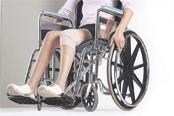 One of the best ways to prevent and control occupational injuries, illnesses, and fatalities is to “design out” or minimize hazards and risks early in the design process. NIOSH is leading a national initiative called Prevention through Design PtD to promote this concept and highlight its importance in all business decisions.The concept of PtD can be defined as:Addressing occupational safety and health needs in the design process to prevent or minimize the work-related hazards and risks associated with the construction, manufacture, use, maintenance, and disposal of facilities, materials, and equipment.
One of the best ways to prevent and control occupational injuries, illnesses, and fatalities is to “design out” or minimize hazards and risks early in the design process. NIOSH is leading a national initiative called Prevention through Design PtD to promote this concept and highlight its importance in all business decisions.The concept of PtD can be defined as:Addressing occupational safety and health needs in the design process to prevent or minimize the work-related hazards and risks associated with the construction, manufacture, use, maintenance, and disposal of facilities, materials, and equipment.
A growing number of business leaders are recognizing PtD as a cost-effective means to enhance occupational safety and health.
via CDC – Prevention through Design – NIOSH Workplace Safety and Health Topic.





